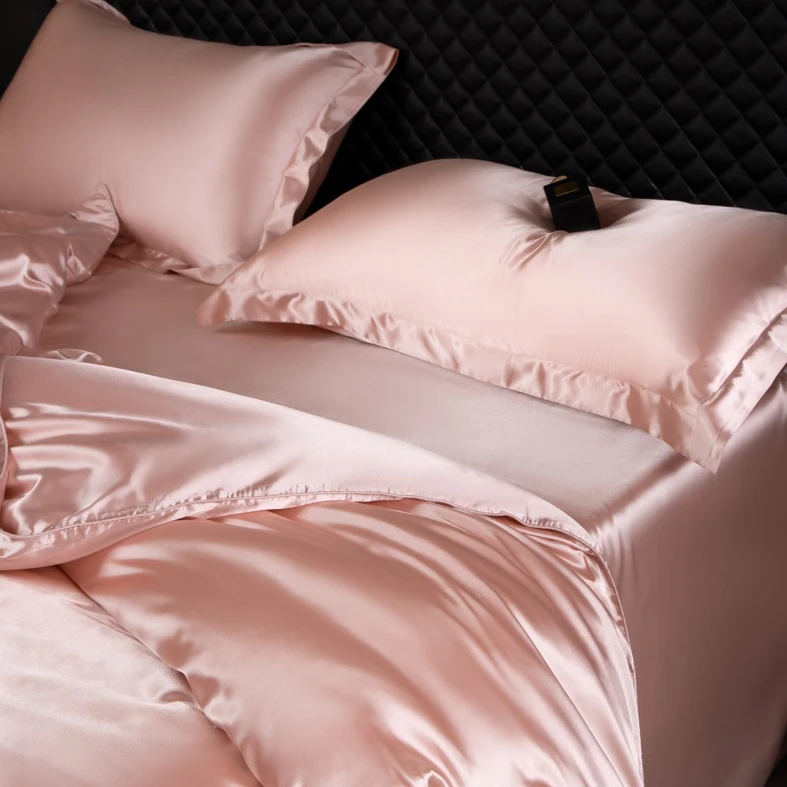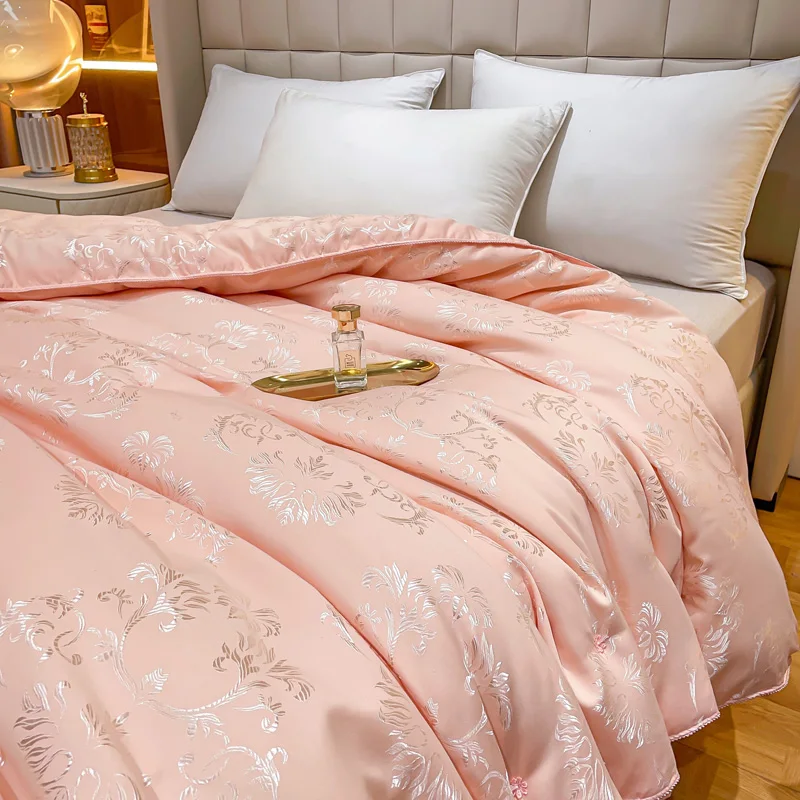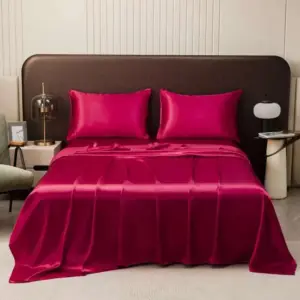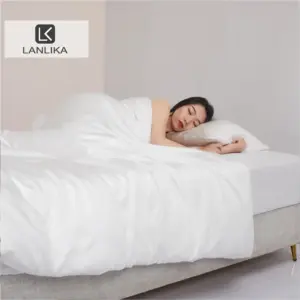Understanding Bedroom Allergens and Their Impact on Sleep Quality
Do you often wake up sneezing, with a stuffy nose, or itchy eyes? Your bedroom might be harboring more than just your dreams. For millions of people worldwide, the bedroom becomes a nightly battleground against invisible allergens that significantly disrupt sleep quality.
Common bedroom allergens include:
- Dust mites: Microscopic creatures that thrive in warm, humid environments and feed on dead skin cells
- Pet dander: Tiny, even microscopic, flecks of skin shed by cats, dogs, and other furry animals
- Mold and mildew: Fungi that grow in damp, poorly ventilated areas
- Pollen: Plant particles that can enter through windows or be carried in on clothing
These allergens don’t just cause discomfort—they can seriously impact your health. Studies show that approximately 30-40% of the global population suffers from dust mite allergies alone, with symptoms ranging from mild irritation to severe respiratory issues. When these allergens trigger nighttime allergic reactions, they disrupt sleep cycles, leading to daytime fatigue, reduced cognitive function, and overall decreased quality of life.
The good news? Your choice of bedding can make a significant difference. The hypoallergenic properties of silk fabric make it an exceptional natural solution for allergy sufferers. Unlike many natural hypoallergenic fabrics, silk offers unique properties that specifically combat bedroom allergens at their source.
The Science Behind Silk’s Hypoallergenic Properties
What makes silk such an effective weapon against allergens? The answer lies in its molecular structure and natural composition. Silk contains a protein called sericin that creates a hostile environment for common allergens, particularly dust mites.
Natural Protein Barrier
Silk fibers are composed of two proteins: fibroin and sericin. The sericin protein creates a natural barrier against allergens, making it difficult for them to penetrate and accumulate within the bedding. This protein structure is fundamentally different from plant-based fibers like cotton, which can harbor allergens within their more porous structure.
Molecular Defense System
The molecular structure of silk creates a naturally inhospitable environment for dust mites. Unlike cotton and synthetic materials, which often have irregular surfaces and looser weaves that provide hiding places for allergens, silk’s smooth surface and tight molecular structure create fewer opportunities for allergens to become trapped.
Studies have shown that silk’s natural properties can significantly reduce the presence of common allergens in bedding, making it an ideal choice for those suffering from allergic reactions. The science behind silk’s hypoallergenic nature is well-documented and provides compelling evidence for its effectiveness.
Dust Mite Resistance: The Tight Weave Advantage
One of silk’s most remarkable features is its natural resistance to dust mites—the primary allergy trigger in bedrooms. Dust mites are tiny creatures, measuring about 0.3 millimeters in length, but their waste products can cause significant allergic reactions.
Silk’s tight molecular structure creates a physical barrier that dust mites simply cannot penetrate. The smooth surface of silk fibers prevents dust mites from burrowing into the material, unlike cotton, which provides numerous nooks and crannies for these allergens to thrive. The average pore size in silk fabric is significantly smaller than both dust mites themselves and their waste particles.
This natural barrier effect makes 100% silk sheets particularly effective for allergy sufferers. The tighter the weave (measured in momme weight), the more effective this barrier becomes, creating an environment where dust mites simply cannot establish colonies.
Moisture Management: How Silk Prevents Mold and Mildew
Another key to silk’s hypoallergenic performance is its exceptional moisture management. Dust mites thrive in humid environments (typically requiring 70-80% humidity), while mold and mildew need moisture to grow. Silk naturally wicks away moisture from the body and releases it into the air, maintaining a drier sleep environment.
The thermal properties of silk bedding create significant advantages:
- Absorbs up to 30% of its weight in moisture without feeling damp
- Releases moisture quickly, preventing the humid conditions allergens need
- Maintains optimal moisture balance regardless of season
- Creates an inhospitable environment for dust mites, mold, and mildew growth
This natural moisture-wicking ability means that silk bedding stays drier throughout the night, even as your body releases moisture during sleep. The result is a less hospitable environment for allergens that require moisture to thrive.
Silk vs. Other Bedding Materials for Allergy Relief
When comparing bedding materials for allergy relief, silk stands out from the competition. Understanding how different materials perform can help you make the best choice for your specific needs.
| Material | Dust Mite Resistance | Moisture Management | Breathability | Durability | Overall Allergy Protection |
|---|---|---|---|---|---|
| Silk | Excellent | Excellent | Excellent | Good (with proper care) | Excellent |
| Cotton | Poor to Fair | Fair | Good | Excellent | Fair |
| Bamboo | Good | Good | Good | Good | Good |
| Wool | Good | Excellent | Good | Excellent | Good |
| Synthetic | Fair | Poor | Poor to Fair | Variable | Fair |
Silk’s natural properties make it particularly effective for allergy sufferers. Unlike cotton, which can trap moisture and provide a breeding ground for dust mites, silk naturally repels these allergens. Bamboo offers some hypoallergenic benefits but doesn’t match silk’s smooth fiber structure that prevents allergen accumulation.
Wool can be beneficial for some allergy sufferers due to its moisture-wicking properties, but many people with allergies may actually be sensitive to wool itself. Synthetic materials often trap heat and moisture, creating ideal conditions for dust mites to thrive.
When considering the question of whether silk is good for allergies, the evidence strongly suggests it is one of the best natural materials available for allergy protection, combining multiple beneficial properties that other materials simply cannot match.
Essential Silk Bedding Products for Allergy Protection
Creating an allergen-resistant sleep sanctuary requires strategic choices about which bedding items provide the most protection. Different silk bedding products offer varying levels of allergy defense based on their function and proximity to your body.
A complete approach using mulberry silk bedding sets provides the most comprehensive protection, but you can also implement silk bedding gradually, focusing on the items that will make the biggest difference first.

Silk Pillowcases: Your First Line of Defense
For many allergy sufferers, silk pillowcases represent the most important initial investment. Consider this: you spend approximately one-third of your life with your face in direct contact with your pillowcase. This makes the area around your pillow a critical zone for allergen control.
Silk pillowcases provide several key benefits:
- Create a barrier between your respiratory system and potential allergens
- Prevent dust mites from colonizing close to your breathing area
- Reduce morning congestion, sneezing, and eye irritation
- Offer additional benefits for skin and hair health
Many allergy sufferers notice immediate improvements after switching to silk pillowcases, making them an excellent starting point for creating an allergy-friendly bed.
Complete Protection: Sheets, Duvets, and Mattress Covers
While pillowcases address the immediate breathing zone, a comprehensive approach includes multiple silk bedding components working together:
Silk fitted sheets: Create a barrier between your body and the mattress, which can harbor millions of dust mites. Silk fitted sheets seal the entire sleep surface against allergens.
Silk flat sheets: Provide an additional protective layer that helps maintain a clean sleep environment.
Silk duvet covers: Encase your comforter or duvet, preventing allergens from accumulating in what is typically the bulkiest (and hardest to wash) bedding item.
Silk-filled comforters: Offer the ultimate in hypoallergenic bedding, with both filling and cover material providing allergen protection.
For those with severe allergies, implementing a complete silk bedding system provides the most effective defense. However, those with budget constraints can prioritize based on severity of symptoms, starting with pillowcases and gradually adding other components.
California King Silk Fitted Sheet, King Size Silk Fitted Sheet, Mulberry Silk Fitted Sheet, Queen Size Silk Fitted Sheet
Price range: $120.04 through $390.79 Select options This product has multiple variants. The options may be chosen on the product pageFull-size Silk Sheets, King Size Silk Sheets, Queen Size Silk Sheets, Twin Size Silk Sheets, Washable Silk Sheets
Price range: $95.95 through $178.37 Select options This product has multiple variants. The options may be chosen on the product page100% Silk Sheets, Green Silk Sheets, King Size Silk Bedding Set, Mulberry Silk Bedding Sets, Queen Size Silk Bedding Set
Price range: $1,246.21 through $1,615.22 Select options This product has multiple variants. The options may be chosen on the product pageKing Size Silk Fitted Sheet, Queen Size Silk Fitted Sheet, Twin Silk Fitted Sheet
Price range: $113.28 through $145.58 Select options This product has multiple variants. The options may be chosen on the product page100% Silk Sheets, King Size Silk Bedding Set, Mulberry Silk Bedding Sets, Queen Size Silk Bedding Set, White Silk Sheets
Price range: $1,000.79 through $1,351.42 Select options This product has multiple variants. The options may be chosen on the product pageBamboo Silk Sheets, Queen Size Silk Fitted Sheet
Price range: $230.24 through $297.88 Select options This product has multiple variants. The options may be chosen on the product page
Quality Indicators: What Makes Silk Effective for Allergies
Not all silk bedding offers equal protection against allergens. Understanding quality indicators ensures you select products that deliver maximum hypoallergenic benefits.
Types of Silk
Mulberry silk, produced by silkworms fed exclusively on mulberry leaves, is the highest quality silk available for bedding. Its long, uniform fibers create the smooth, tight weave necessary for effective allergen protection. Other varieties like wild silk (tussah) have shorter, less uniform fibers that may not provide the same level of barrier protection.
Momme Weight: The Key to Effectiveness
Momme (mm) weight measures silk fabric density—similar to thread count in cotton. For effective hypoallergenic features in silk sheets, look for:
- 16-19 momme: Entry-level, provides basic protection
- 19-22 momme: Optimal for most allergy sufferers (balance of protection and breathability)
- 22-25 momme: Maximum protection for severe allergies
Higher momme weights create tighter weaves that more effectively block dust mites and other allergens while maintaining superior durability.

Certifications Matter
Look for OEKO-TEX Standard 100 certification, which ensures silk bedding is free from harmful chemicals that could trigger allergic reactions. This international testing standard verifies that every component of the product—from thread to buttons—meets strict safety requirements.
Understanding Momme Weight and Silk Quality
The momme weight system directly impacts both the feel and protective qualities of silk bedding. Higher momme weights indicate more silk used per square inch, resulting in:
- Increased durability and longevity
- Enhanced dust mite resistance through tighter weave
- Better moisture management capabilities
- Improved temperature regulation
For pillowcases, 19-22 momme provides excellent protection while maintaining comfort. For fitted sheets, which need to withstand more wear, 22-25 momme offers superior durability and allergen protection. Understanding these differences helps you create a complete hypoallergenic bedding system tailored to your specific needs.
Maintaining Silk’s Hypoallergenic Properties Through Proper Care
Even the highest quality silk bedding requires proper maintenance to preserve its hypoallergenic benefits. With the right care routine, silk bedding can maintain its allergen-fighting properties for years.
Washing Instructions:
1. Use mild, silk-specific detergent (free of enzymes and bleach)
2. Wash in cold water (30°C/86°F maximum) on a gentle cycle
3. Place items in a mesh laundry bag for extra protection
4. Avoid fabric softeners, which can damage silk fibers
Drying and Storage:
1. Air dry away from direct sunlight
2. Never use a dryer unless it has a specific silk setting
3. Store fully dry in a cool, dry place
4. Avoid plastic containers that can trap moisture
For optimal allergen control, wash silk bedding every 7-14 days. This regular cleaning removes any allergens that might accumulate on the surface while preserving the natural protective qualities of the silk.
For those who prefer easy-care options, washable silk sheets offer specialized treatment that makes them more resilient to regular washing while maintaining hypoallergenic properties.
Beyond Allergies: Additional Health Benefits of Silk Bedding
While allergy relief is a primary benefit of silk bedding, its advantages extend far beyond allergen protection. Sanctuary Soft’s premium silk bedding offers multiple health benefits that enhance overall well-being.
Temperature Regulation for Better Sleep
Silk naturally regulates body temperature through its unique fiber structure:
* Adapts to body temperature, cooling in summer and warming in winter
* Creates micro-air pockets that provide insulation
* Wicks moisture away from the body to prevent overheating
* Helps maintain optimal sleep temperature for deeper rest
Skin Benefits for Sensitive Individuals
The natural properties of silk for sensitive skin are remarkable:
* Contains amino acids similar to those found in human skin
* Creates minimal friction against delicate skin
* Reduces irritation for eczema and dermatitis sufferers
* Helps skin retain natural moisture without absorbing facial creams
Hair Protection and Maintenance
Silk’s smooth surface creates less friction against hair:
* Reduces bedhead, frizz, and breakage
* Helps preserve hairstyles and treatments longer
* Maintains natural hair oils unlike cotton, which absorbs them
* Particularly beneficial for curly, textured, or treated hair

Addressing Common Concerns: Is Silk Right for Your Allergies?
Despite silk’s impressive hypoallergenic properties, potential users often have questions and concerns about making the switch. Addressing these can help you determine if silk bedding is right for your specific situation.
Q: Can someone be allergic to silk itself?
A: True silk allergies are extremely rare. Silk protein allergies exist but affect fewer than 0.1% of the population. Most reactions attributed to “silk allergies” are actually responses to cleaning chemicals or dyes used in processing.
Q: Is silk bedding worth the investment?
A: While the initial cost is higher than conventional bedding, silk’s durability often makes it more economical over time. Quality silk bedding typically lasts 5-10 years with proper care, compared to 2-3 years for cotton bedding. For severe allergy sufferers, the health benefits and reduced need for medications may offset the cost.
Q: Is silk bedding sustainable?
A: High-quality silk production can be sustainable. Mulberry trees require minimal pesticides, and silkworm cultivation has a lower environmental impact than many synthetic fabric production methods. Look for ethical producers with transparent sourcing practices.
Q: Will silk bedding be enough for severe allergies?
A: For severe allergies, silk bedding should be part of a comprehensive approach. While it provides significant benefits, those with severe allergies may need additional interventions like air purifiers, regular deep cleaning, and possibly medical treatment.
Learning what makes silk hypoallergenic can help you make an informed decision about whether it’s the right solution for your specific allergy concerns.
Creating a Complete Allergen-Free Sleep Environment
While silk bedding forms an excellent foundation for an allergy-friendly bedroom, a comprehensive approach maximizes relief. Integrating silk bedding into a broader allergen management strategy creates the most effective results.
Consider these complementary practices:
- Use allergen-proof covers on mattresses and box springs
- Maintain bedroom humidity between 30-50% using dehumidifiers or air conditioning
- Implement weekly hot water washing of all washable bedding
- Remove carpeting in bedrooms if possible, or vacuum with HEPA filters
- Use air purifiers with HEPA filtration near the bed
- Keep pets out of the bedroom, especially off bedding
The ultimate guide to silk bedding provides comprehensive information on creating a complete sleep system that minimizes allergen exposure while maximizing comfort.
Is Silk Truly Effective for All Types of Allergies?
While silk offers significant benefits for allergy sufferers, its effectiveness varies depending on the specific allergy type and severity. Understanding these nuances helps set realistic expectations.
Dust Mite Allergies: Silk is exceptionally effective against dust mite allergies due to its tight weave and inhospitable surface. Most users experience significant reduction in symptoms.
Mold and Mildew Allergies: Silk’s moisture-wicking properties make it very effective for preventing mold and mildew growth in bedding.
Pet Dander Allergies: Silk’s smooth surface helps prevent pet dander from becoming embedded in bedding, though it cannot prevent airborne dander particles.
Seasonal Allergies (Pollen): Silk provides moderate benefits by creating a barrier between stored pollen and the sleeper, but cannot prevent airborne pollen exposure.
Contact Dermatitis: For those with skin sensitivities to certain fabrics, silk’s hypoallergenic benefits of silk fabric can significantly reduce reactions.
For most allergy sufferers, silk bedding provides noticeable improvement in symptoms. However, those with severe allergies or multiple allergy types may need additional interventions alongside silk bedding for complete relief. The combination of silk’s natural properties with proper bedroom allergen management creates the most effective environment for allergy-free sleep.







